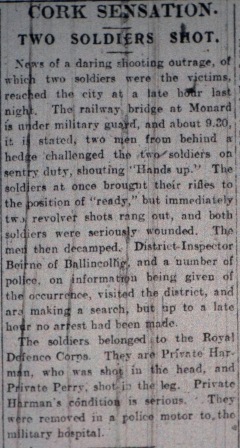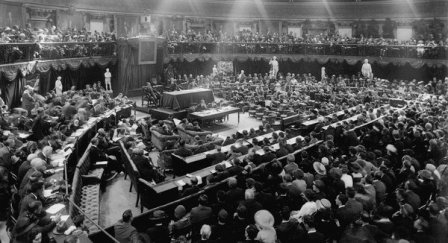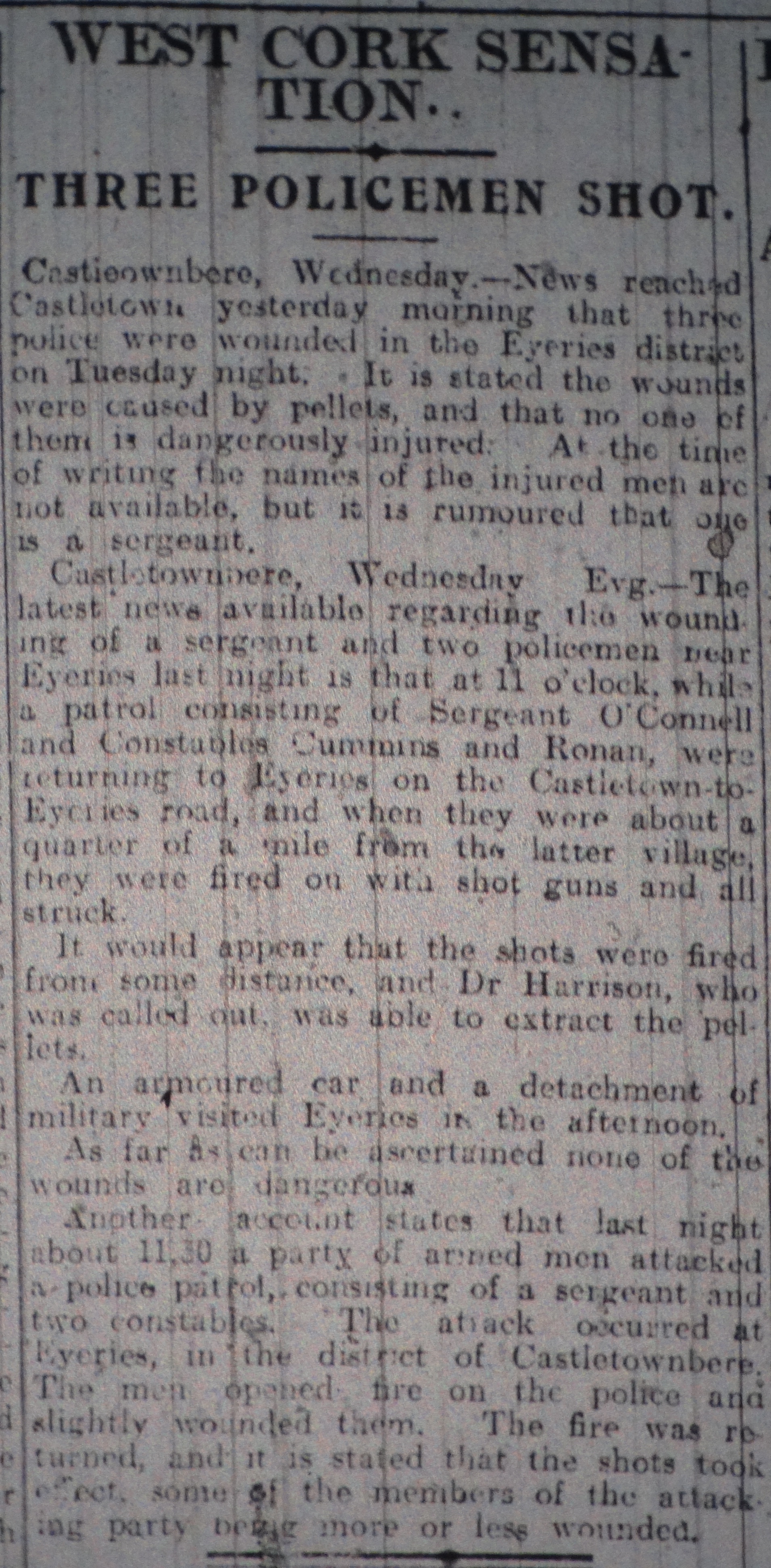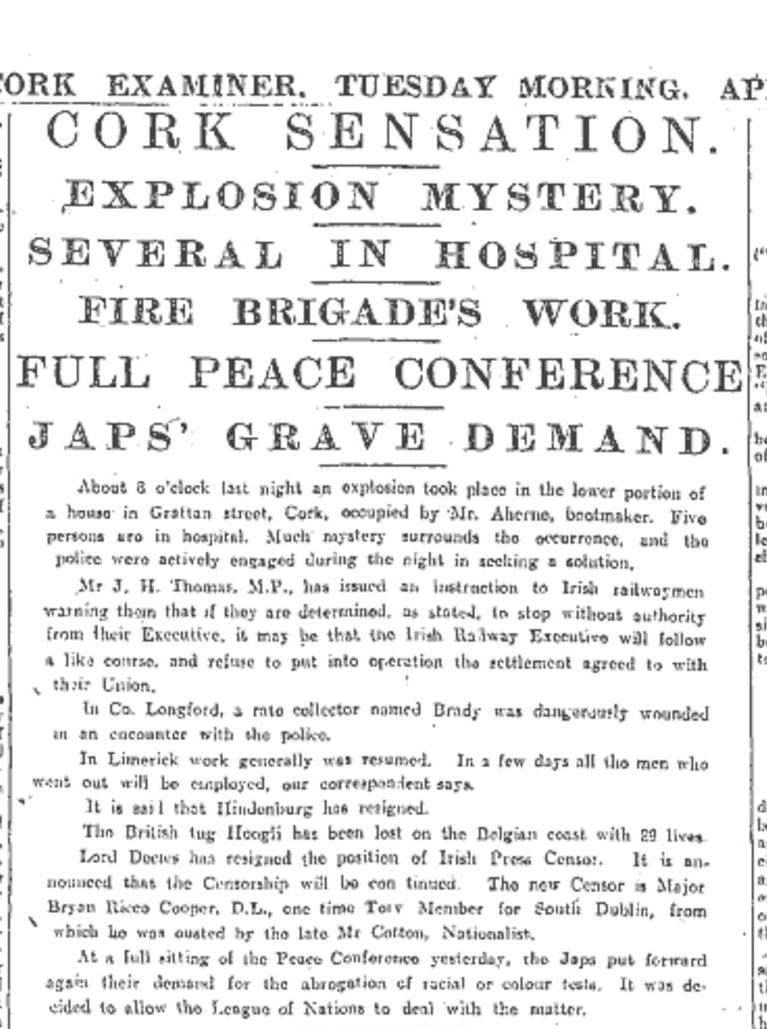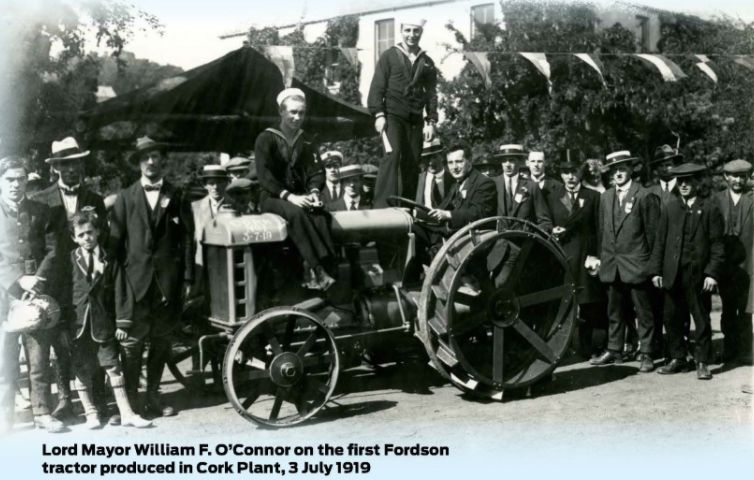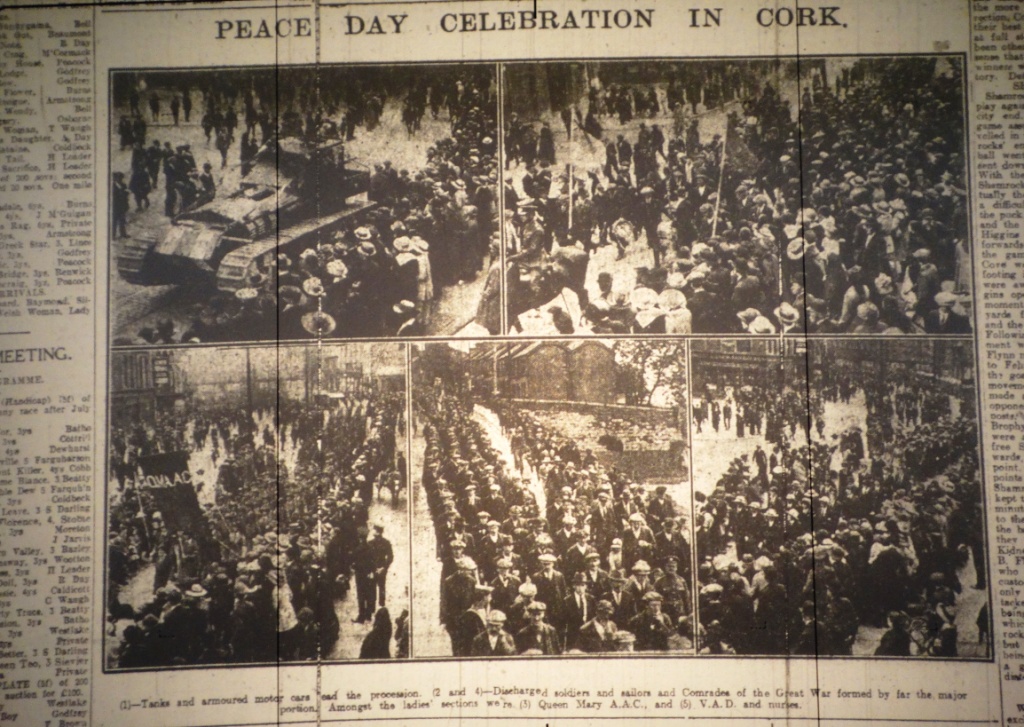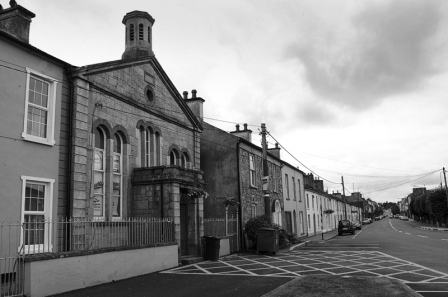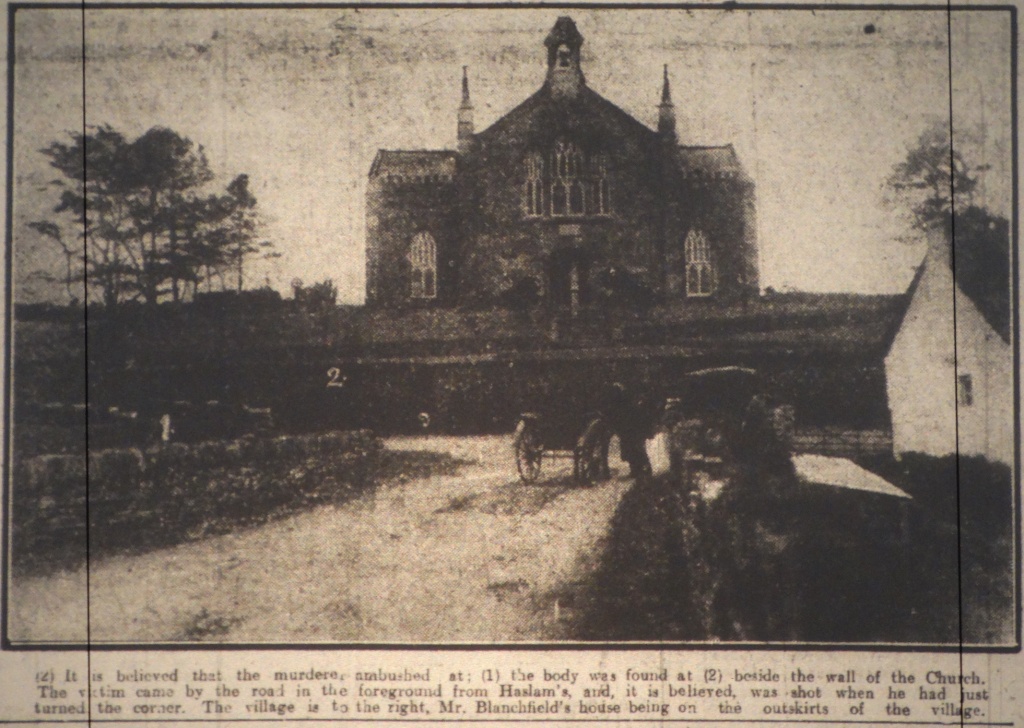1919
-
Two RDC Soldiers Shot
Report from Cork Examiner, 11 January 1919
10 January 1919The first conflict to occur in Cork in the early days of 1919 was the shooting of two Royal Defence Corps soldiers by Monard Bridge. The shooting occurred on the 10th of January in Monard County Cork and was one of the first attacks on military personnel in the County. The Royal Defence Corps would have been a very visible aspect of the British security apparatus in Ireland. The Corps was formed in March 1916 as a form of home garrison to take over security duties while the regular armed forces were fighting overseas. The Corps was made up of men who were considered too old or were certified medically unfit for frontline combat. Their duties included guarding transport infrastructure such as bridges and train stations.
The Monard Railway Bridge was considered an important transport node at the time and was thus given a security detail. The two soldiers, Private Harman and Private Perry, were on sentry duty at Monard when they heard two men from behind a nearby hedge shout out “Hands up”. The two soldiers brought to arms their rifles and at the same time they were met with revolver fire from the two men hiding in the hedge. Both soldiers were shot, Private Harman in the head and Private Perry in the leg.
District-Inspector Beirne of Ballincollig stated that Private Harman was in a serious condition but both men were not killed. He also stated that the attackers were not found and no arrests were made.
References
Cork Examiner, 11 January 1919 -
The First meeting of the Dáil and Soloheadbeg Ambush
First meeting of Dáil Éireann
21 January 1919After the 1918 election the absentee Sinn Féin members did not identify the Westminster parliament as the sovereign parliament of Ireland. Thus the first meeting of the Dáil was held on the 21st of January in Mansion House in Dublin. Only 27 of the 73 Sinn Féin representatives of the people were present with forty two being listed as imprisoned by a foreign force or on the run from enemy agents. The thirty two representatives of Irish constituencies including the remaining MPs of the Irish Parliamentary Party and the Unionist Party were invited but declined to attend. The first Dáil had a number of important articles to discuss. The first was the creation of a Dáil constitution which was a small document which simply detailed the Dáil, the structure of Government and details of finance. Secondly a Declaration of Independence was read aloud calling for the sovereignty of the Irish nation and the evacuating of the British garrison. Finally the Dáil sent a message to the free nations of the world asking for the recognition of the sovereignty of the Irish nation in this ‘promised era of self-determination’.
On the same day as the Dáil met the Soloheadbeg Ambush took place, which is traditionally regarded as the first action of the War of Independence. The ambush took place in Soloheadbeg in County Tipperary. The objective of the ambush was to retrieve gelignite which is a explosive substance useful in the creation of mines or bombs. Sean Treacy led a group of ten volunteers to the ambush site to confront the convoy. The cart carrying the gelignite was escorted by two Ric officers, Constables McConnel and O’Donnell, as well as the cart driver James Flynn and a council worker Patrick Flynn. The two RIC constables were killed and the two civilians were held until the cart carrying the gelignite had been evacuated. The British government declared South Tipperary a Special Military Area under the Defence of the Realm Act two days later.
References
Cork Examiner, 22 January 1919 -
RIC Patrol Shot in Eyeries
Report from Cork Examiner
8 April 1919The War of Independence was fought throughout Ireland but it is generally considered that the brunt of the conflict was fought in Cork and no more so than the isolated areas in the far west of the county. The Beara Peninsula was home to several isolated RIC stations which were typically only manned by four or five RIC constables. These stations were frequently attacked. On Tuesday 8th of April 1919 an attack took place in the Eyeries district, in a place known as Parkmore, which is 7 kilometres north of Castletown-Bearhaven. Four RIC Constables were attacked and three were wounded at around 11pm as they were patrolling the area. There was to be a fair and market held the following day.
The RIC on patrol were Sergeant O’Connell, Constable Cummins, Constable Quinlan and Constable Ronan who were returning to their barracks in Eyeries along the Castletown-Bearhaven to Eyeries road. They were intercepted by members of the Inches Company under Peter Neill who opened fire with shotguns. Constable Ronan was seriously wounded, with Sergeant O’Connell and Constable Cummins taking minor injuries. Once the majority of the patrol was incapacitated, the Inches Company then evacuated the area. An armoured car and detachment of soldiers arrived on site in search of the Inches Company but were unable to locate any of the men involved. This led to the area being placed under martial law and the market fair the following day was cancelled.
References
Cork Examiner, 10 & 28 April 1919 -
Limerick Soviet
15 April 1919The Limerick Soviet was a self-declared soviet that existed from 15 to 27 April 1919 in County Limerick, Ireland. The War of Independence had begun in earnest since January 1919 with many skirmishes taking place throughout the country. On 6 April 1919 the IRA tried to liberate Robert Byrne, who was under arrest by the RIC in a hospital, being treated for the effects of a hunger strike. In the rescue attempt Constable Martin O'Brien was fatally wounded and another policeman was seriously injured. Byrne was also wounded and died later on the same day. In response to the attack on the RIC the British Brigadier Griffin declares Limerick City an Special Military Area under the Defence of The Realms Act which essentially entailed martial law. Tanks and soldiers were deployed to the bridges on the Shannon and people were required to be searched and use passes to exit and enter the city.
In response to this a general strike was called throughout the city by the by the city's United Trades and Labour Council. The general strike was extended to a boycott of the troops. A special strike committee was set up to print their own money, control food prices and publish newspapers. The committee was renamed the Limerick Soviet which entailed a self governing committee. The businesses of the city accepted the strike currency. Outside Limerick there was some sympathy in Dublin, but not in the main Irish industrial area around Belfast. The strike ended on the 27th of April after the Catholic Bishop for Limerick Bishop Denis Hallihan and the Sinn Féin Lord Mayor of the city Phons O’Mara called for the strike to end. The Limerick Soviet declared the strike over on 27 April.
References
15 & 28 April 1919 Cork Examiner -
Grattan Street Bomb Factory Explosion
Report from Cork Examiner 29 April 1919
28 April 1919Residents of Cork City Centre would have been alarmed on April 28th 1919 as a large explosion would have punctuated the night. The IRA had created a bomb factory at 33 Grattan Street in early 1919 to produce homemade explosives for use by active service units and flying columns. At the time the Cork Examiner and local authorities believed it to be an experiment. The premises belonged to a man named Andy Ahern who used the bottom floor as a shoe shop, and most of the substances were not identified right away. The IRA stationed on Grattan Street had learned that the RIC were searching buildings close to the factory. It was decided that the evidence and bomb making materials should be removed from the premises in order to avoid detection.
During the process of emptying the explosive powder from storage tins into coarser linen bags, a build up of heat, ignited the explosive material. Luckily there was only powder in the bags and no shrapnel, but three Volunteers were badly injured and Lieutenant Michael Tobin subsequently died. The three men working on emptying the explosive material were Company Captain Dick Murphy, Lieutenant Michael Tobin and Sean O’Connell. There were three more Volunteers, P. Varian, F. Downey and Miss C. Moore on the premises at the time but they were in the next room, safe from the main explosion and only sustained minor injuries
Lieutenant Michael Tobin passed away on the 20th of May and his remains where removed from the Mercy Hospital to the Saint Peter and Paul’s Cathedral on the 21st of May. A large procession preceded his funeral and his remains were laid to rest in a family burial group in Ballineen, County Cork.
References
Cork Examiner, 29-30 April 1919 -
Cork City’s First Model F Fordson
3 July 1919While the War of Independence waged throughout the state the normal everyday business of life continued. In 1919 a famous business set up shop in Cork City. Henry Ford of the famous ford automobile manufacturers founded a factory in Cork City in order to manufacture Fordson F tractors closer to the European market. Henry Ford had always wished to return some of his wealth to his native county and he also wished to encourage a more industrious spirit in the South of Ireland. The location of the Ford Manufacturing Plant was proposed at a special meeting of the Corporation Council on the 22nd of November in 1916. The proposal was made from Richard Woodhead, of No. 91, Lord Street, Southport, for the purchase for the purpose of a factory of the freehold of the Cork City Park and race track. This also included the building site on the Marina and a portion of the public road on Victoria Quay, now known as Kennedy Quay.
In 3 July 1919 the first Fordson F tractor rolled off the assembly line in the Marina Factory. The Fordson Model F tractor was a revolutionary design largely due to the fact it was smaller than any other tractor in production by other companies at the time. The smaller size of the Fordson Model F made it cheaper to mass produce so it was more affordable to the small farmers who would struggle to afford more complex models. This also had the added benefit of reducing its overall weight and likeliness to sink in bogged down fields compared to its rivals.
References
Cork Examiner, 3 – 8 July 1919 -
World War I Peace Celebrations In Cork
Report from Cork Examiner 21 July 1919
19 July 1919On 19 July 1919 the British Authorities organised a victory of peace parade to celebrate the signing of the Versailles treaty and the official end of the First World War. The parade included a number of different sections. The parade began with a show of armoured cars and ‘Whippet’ tank’s followed by demobilised personnel from all arms of the British military. Then followed Irish regiments, such as the Munster Fusiliers, and other British regiments stationed in Ireland during this time. There was also a large display from the female military units who had also served during World War 1. Amongst the female units were the Queen Mary Army Auxiliary Corps (Q.M.A.A.C.), the Voluntary Aid Detachment (V.A.D.), The Army Pay Corps Clerks and the Women’s Legion. On the Grand Parade there was a fixed platform in position close to the National Monument where Major-General Williams took up position in order to salute the parading regiments.
Though the parade went off without a problem and large crowds gathered to support the peace parade, that evening there were a number of public order disturbances. A group of British soldiers were confronted while singing a song which was insulting to the Irish and were chased off the streets only to be saved from further harm by the RIC. Later a RIC Constable Keogh was shot in the thigh while chasing a crowd of protestors before the RIC returned fire with revolvers. One British army Officer was attacked and had to take refuge in the Victoria Hotel before RIC officers escorted him out of the city centre. Armed pickets from Victoria Barracks were later posted throughout the city centre and were jeered. By this stage the majority of people had left the streets and there were no other disturbances.
References
Cork Examiner, 21 July 1919 -
Volunteer attack in Fermoy
Former Wesleyan Church in Fermoy
7 September 1919The IRA raid and the subsequent reprisals carried out by British security forces was a precursor to how much of the urban conflict that took place in the War of Independence developed. The first major action of the War of Independence and the first concerted attack on the British Army since 1916 was in the town of Fermoy, County Cork. It was led by Liam Lynch, Officer Commanding, Cork No. 2 Brigade of the IRA. The exact number of volunteers involved in the ambush varies from multiple sources. It is estimated that about 20 Volunteers from the No.2 Brigade took part with the assistance of 10 other Volunteers from other areas. The number of British Forces also varied in number with the newspaper accounts stating a total of 14 soldiers and 1 officer were present at the time of the ambush. The aim of the ambush, as with most such operations in 1919, was to capture badly-needed weapons.
The routines of the British Troops stationed at Fermoy were observed for a period of about three months and it was decided that the most opportune moment to stage an ambush was as a small group of British soldiers marched toward the old Wesleyan church for Sunday service. Fifteen soldiers of the Shropshire Light Infantry were ambushed before the Sunday service by the group of volunteers armed with revolvers and clubs. Private Jones of the King's Own Shropshire Light Infantry died from a single gunshot to the heart. A second British soldier to be gravely injured was Private Lloyd who was shot in the neck. The only Irish Volunteers to be wounded in the engagement was Liam Lynch who was slightly wounded in the shoulder. The rifles were loaded into waiting cars and driven away with trees being felled on the main road to cover their escape from RIC and Military vehicles.
The attack was the first in which a British soldier was killed by the IRA during the War of Independence On the Monday night following the raid a large party of soldiers from the British garrison at Fermoy descended upon the town. They smashed the windows in most of the shops in Pearse Square, MacCurtain Street and Patrick Street and looted the contents. The following night the troops were confined to barracks, but on the Wednesday night they assembled again only to find a large crowd of residents waiting for them in Emmet Street. Armed with sticks, stones and other weapons, the local people attacked the soldiers so furiously that they were driven back to their barracks. Many citizens barricaded their homes and premises and prepared to defend them against further attack, but by Thursday the spate of lawlessness appeared to be over for the moment.
References
Cork Examiner, 8 September 1919 -
Roadside Murder at Nohoval
Nohoval Church
December 17 1919On December 17 1919 the national school teacher of Nohoval Mr Michael Blanchfield was brutally murdered on the road outside the local Catholic Church of St Patrick. Mr Michael Blanchfield was a single man from a well known Bandon family, aged about 45 years old, and a very popular figure in the village according to locals. He was appointed national school teacher in Nohoval in 1899. During his 20 year service at the Nohoval School he lodged at the home of a Mr McCarthy before recently renovating a cottage of his own. It was stated that Mr Blanchfield had a set routine of finishing his supper at the home of Mr McCarthy and heading off to visit a sick neighbour, a Mrs Haslam.
There were no witnesses to the murder but the main theory was that it was a robbery. It was known Mr Blanchfield would carry ten to twelve £10 pound notes on his person at all times. This was a very large amount of money to be carrying around since the average weekly wage of a corporation worker was 22 to 30 shillings a week and in Henry Ford’s factory, which was considered high pay, you could earn up to 50 shillings a week. Note that at this time 20 shillings only made £1 pound sterling and Mr Blanchfield was carrying around £100 to £120 pounds. Mr McCarthy stated that he warned Mr Blanchfield not to carry so much money around on his person due to the fact that Mr Blanchfield had been robbed a few years previously. Mr Blanchfield was ambushed close to his house and was killed by discharges from a shotgun at close range.
District-Inspector A. J. Wansbrough from Kinsale made inquiries into the murder. With the evidence collected they suspected that Mr Blanchfield was first shot in the back and as he turned to face his attacker he began to lean forward and then was shot partially in the head. The murderer was suggested to have ambushed Mr Blanchfield 50 yards from his home in front of the wall of the church. No one was arrested at the time of the murder or the time of the news article being printed
References
Cork Examiner, 19-20 December 1919
